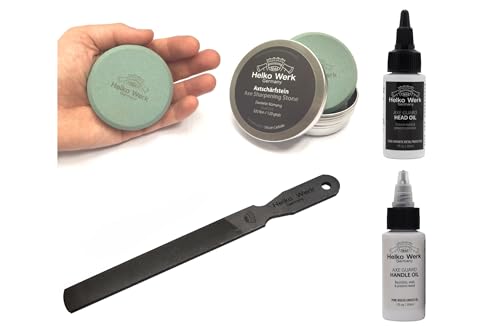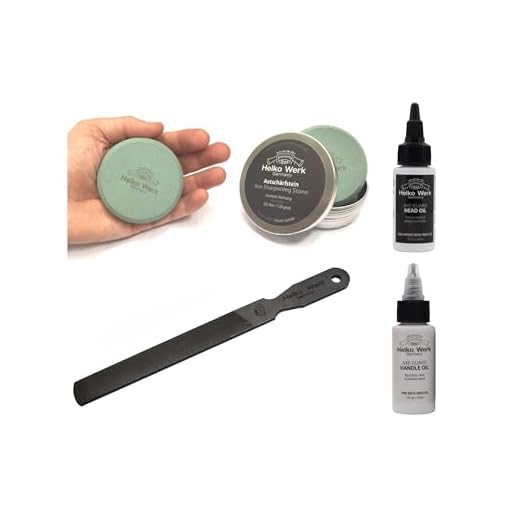







Sharpening a broad axe is an essential skill for anyone who works with wood. A dull axe not only makes the task more difficult, but it can also be dangerous. A sharp axe, on the other hand, not only cuts through wood effortlessly, but it also reduces the risk of accidents. In this article, we will guide you through the process of sharpening a broad axe to ensure that you have a tool that is ready to tackle any woodcutting job.
Before we begin, it’s important to understand the anatomy of a broad axe. The cutting edge of a broad axe is wider than that of a regular axe, which means that the sharpening process requires a slightly different technique. The goal is to create a sharp edge that is thin enough to cut through wood, but sturdy enough to withstand the force of chopping. By following the steps outlined in this article, you will be able to achieve a razor-sharp edge that will make your broad axe a valuable tool in your woodworking arsenal.
To begin sharpening your broad axe, you will need a few tools and materials. You will need a file or a grinder, a honing stone, a leather strop, and some honing oil. The file or grinder is used to remove any nicks or dents in the blade, while the honing stone is used to create a sharp edge. The leather strop and honing oil are used at the final stage to refine the edge and enhance its durability. Once you have gathered these materials, you are ready to start sharpening your broad axe.
Throughout the sharpening process, it is important to maintain a consistent angle. The ideal angle for sharpening a broad axe is typically around 25 to 30 degrees. Start by securing the axe in a vice or using a clamp to hold it securely in place. Begin by using the file or grinder to remove any nicks or dents from the cutting edge. Work from the base of the blade towards the tip, making sure to maintain the same angle throughout. Once you have removed any imperfections, move on to the honing stone.
Choosing the Right Sharpening Stone for Your Broad Axe
When it comes to sharpening your broad axe, choosing the right sharpening stone is essential to achieving optimal results. Different types of sharpening stones offer varying levels of coarseness and materials, catering to specific axes and the desired sharpness. Here are some factors to consider when selecting a sharpening stone for your broad axe:
Type of Stone
There are several types of sharpening stones available, including natural stones, diamond stones, and synthetic stones. Natural stones, such as Arkansas stones, are known for their fine grit and excellent sharpening qualities. Diamond stones provide fast and efficient sharpening but may be more expensive. Synthetic stones, like water stones and oil stones, offer a balance between cost, performance, and ease of use.
Grit Size
The grit size of a sharpening stone refers to its coarseness, which determines how much material it removes and how smooth the resulting edge will be. For broad axes, a coarse grit stone (around 220 to 400 grit) is ideal for removing nicks, dents, and reshaping the cutting edge. Finer grit stones (around 1000 grit and above) are better for honing and polishing the axe blade after initial sharpening.
Tip: You may want to consider purchasing a combination stone that offers both coarse and fine grits, allowing you to use a single stone for different stages of sharpening.
Size and Shape
Consider the size and shape of the sharpening stone in relation to your broad axe. A longer stone will allow for longer strokes and even sharpening, while a wider stone may be more suitable for larger axes. Additionally, look for a stone with a flat surface to ensure consistent and accurate sharpening.
Choosing the right sharpening stone for your broad axe is crucial for achieving a sharp and efficient cutting tool. By considering the type of stone, grit size, and size and shape, you can find a sharpening stone that suits your needs and helps maintain the longevity of your broad axe.
Tips on Preparing Your Broad Axe for Sharpening
Before you begin to sharpen your broad axe, it’s important to properly prepare it to ensure the best results. By following these tips, you can make the sharpening process more effective and efficient:
Clean the Axe: Start by cleaning your broad axe to remove any dirt, sap, or rust that may be present. Use a stiff brush and warm, soapy water to scrub the entire axe head. Rinse it thoroughly and pat it dry with a clean towel.
Inspect the Axe: Carefully examine the axe head for any signs of damage or wear. Look for cracks, chips, or areas where the metal may be pitted. If you notice any issues, it’s best to address them before sharpening.
Secure the Axe: Find a sturdy work surface and secure your broad axe using a clamp or vise. This will prevent the axe from moving or slipping during the sharpening process, ensuring your safety.
Protect Yourself: Put on a pair of heavy-duty work gloves and safety goggles before you start sharpening. This will help protect your hands and eyes from any potential injury caused by metal shavings or flying debris.
Gather Your Sharpening Tools: Before you begin, make sure you have all the necessary sharpening tools at hand. This may include a sharpening stone, honing oil, a file, and a whetstone. Having everything ready will save you time and make the process smoother.
Follow the Sharpening Instructions: Consult the manufacturer’s instructions or seek guidance from an experienced sharpener on how to correctly sharpen your specific broad axe. Different axes may require different techniques and angles, so it’s crucial to follow the proper instructions for optimal results.
Take Your Time: Sharpening a broad axe properly takes time and patience. Don’t rush through the process, as this may result in an uneven or inefficiently sharpened edge. Take your time and focus on achieving a balanced and sharp edge.
By following these tips, you can prepare your broad axe for sharpening and ensure that you achieve the best results possible. Remember to prioritize safety and take your time, and you’ll be ready to start sharpening your broad axe with confidence.
Step-by-Step Guide to Sharpening Your Broad Axe
A sharp broad axe is essential for a clean and efficient cutting or shaping of wood. Follow these simple steps to sharpen your broad axe and ensure optimal performance.
Tools and Materials:
- Broad axe file
- Flat mill file
- Broad axe stone
- Water
- Protective gloves
- Protective eyewear
Step 1: Protect Yourself
Before starting the sharpening process, put on your protective gear, including gloves and eyewear. Safety should always be a top priority.
Step 2: Inspect the Axe
Take a close look at the condition of your broad axe. Check for any nicks, chips, or other damage that may need to be addressed before sharpening.
Step 3: Preparing the Axe
To sharpen the broad axe, remove any dirt or debris from the blade. You can use a brush or a damp cloth to clean the surface.
Step 4: Filing the Blade
- Start by positioning the broad axe securely in a vice or clamp, ensuring that it is stable and won’t move while sharpening.
- Using the broad axe file, begin filing the blade in one direction, with long smooth strokes. Maintain a consistent angle and pressure.
- Work your way from one end of the blade to the other, gradually removing any dulled or damaged metal.
- Switch to the flat mill file if you need to refine the edge further. This file can help remove any remaining imperfections.
Step 5: Honing the Edge
- Once you’re happy with the sharpness of the blade, it’s time to hone the edge. Wet the broad axe stone with water to lubricate it.
- Hold the broad axe at a consistent angle against the stone, and move it back and forth along the full length of the blade.
- Repeat this motion several times, applying even pressure. Make sure to hone both sides of the blade equally.
Step 6: Final Inspections
After honing the edge, inspect the blade again for any remaining imperfections. If necessary, repeat the filing and honing process until you achieve the desired sharpness.
Remember to take your time and work carefully throughout the sharpening process. A properly sharpened broad axe will deliver clean and precise cuts, making your woodworking projects a breeze.






